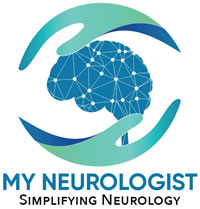What is NMOSD?
It is an autoimmune condition of nervous system affecting a type of cells called astrocytes. Astrocytes provide support structure for neurons of the central nervous system. In past, it was called Neuromyelitis Optica (NMO) or Devic’s syndrome. Sometimes, it is described as autoimmune astrocytopathy.
What exactly is the problem in NMOSD?
An inflammatory autoimmune type of reaction destroys parts of astrocytes of brain resulting in their degeneration and death. With loss of support structure of neurons, they also are affected and degenerate. This process is more noticeable or important at blood-brain barrier sites. A specific antibody, anti-water channel aquaporin-4 (AQP4)-IgG, has been identified, which plays a critical role in this destructive inflammatory process. Checking its level in the serum helps to make the diagnosis. Despite knowing that this antibody is involved, it is not known exactly what triggers this process to start with.
Who are affected by NMOSD?
Mean age for diagnosis is 40 and most of the patients are women and of African descent.
How does NMOSD present?
It can present in multiple different ways, such as:
- Optic neuritis, inflammation of optic nerves, resulting in blurred vision with eye pain.
- Transverse myelitis, inflammation of the spinal cord, with numbness and weakness of legs and arms.
- Area postrema syndrome, inflammation of a particular area of brain, resulting in persistent nausea, vomiting, and hiccups.
- Brainstem syndrome, inflammation of brainstem with multiple type of symptoms.
- Diencephalic syndrome, presenting as narcolepsy or hypothermia.
- Cerebral syndrome, presenting as encephalopathy.
- Acute myopathy with hyperCKemia.
- Myeloradiculapathy.
- Neuropsychiatric syndrome.
- Uveitis.
How is NMOSD diagnosed?
In patients presenting with any of the above problems with no other explanation and positive AQP4-IgG testing on serum. 1/3rd of patients may be seronegative and may be positive for MOG-Ig antibodies
What other conditions may mimic NMOSD?
Following conditions should be considered:
- Multiple Sclerosis
- Sarcoidosis
- Stroke
- Paraneoplastic syndrome
- Spinal mechanical lesions, including AVM
- Metabolic disorders, including deficiency of B12, E, folate, copper
- Malignancy
- Leber optic neuropathy
- GFAP astrocytopathy
- Infections, e.g., TB, syphilis
- Autoimmune conditions, e.g., SLE
- MOG -Associated disorders.
How is NMOSD treated?
Acute attacks are treated with high dose steroids. Sometimes, plasmapheresis or iv Ig can be utilized too. For prevention of attacks and disability, like the treatment in MS, many immune mediators are available, some of whom are FDA approved and some used as off-label. Approved therapies currently are oculizumab (Actemra), satralizumab (Enspryng), and inebilizumab (Uplizna).
What is MOG – Associated disorders?
This is a name for a type of auto-immune inflammatory conditions affecting central nervous system, like NMOSD. They are associated with higher level of MOG antibody in serum.
What are some differentiating features of MOG – Associated disorders?
- Associated with MOG antibodies.
- Males and females equally affected.
- Age of onset is either childhood or mid-30s.
- Disease can be mono-phasic or relapsing type.
- It can appear after an infection.
- Most common presentation are optic neuritis, myelitis, or acute demyelinating encephalomyelitis.
- Treatment protocol is like NMOSD, but specifically proven treatment is not known.
Where can I get more information about NMOSD?


Leave a Reply
Your email is safe with us.
You must be logged in to post a comment.